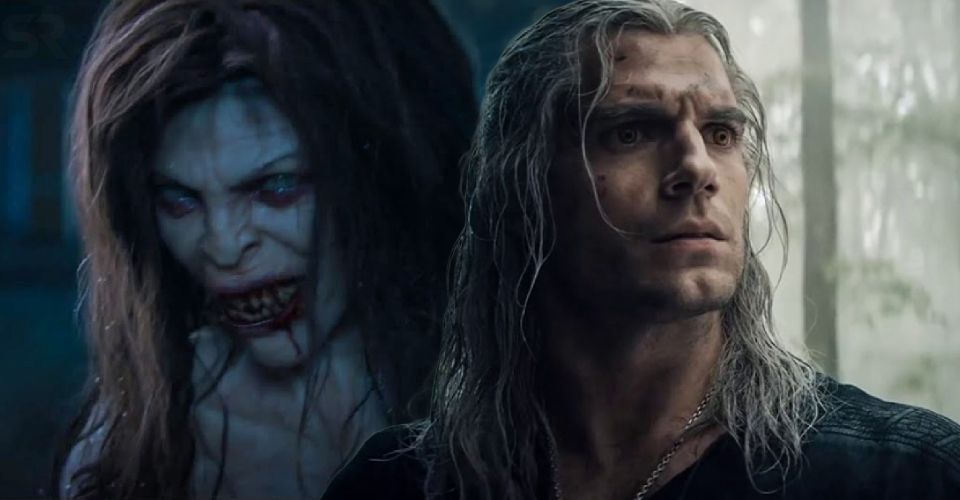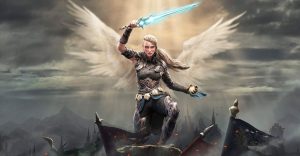What Are Bruxae? The Witcher Season 2’s Vampires Explained

Netflix’s The Witcher season 2 will continue exploring this world full of creatures and monsters, and among those set to be introduced in this new season are the bruxae – but who are they and where do they come from? Based on the book series by Andrzej Sapkoswki, The Witcher made its debut on Netflix in December 2019 and was an instant hit, and it might the streaming giant’s biggest first TV season ever. Netflix knew well how popular The Witcher is and renewed it for a second season before the first one was out.
The team behind The Witcher decided to approach Sapkowski’s world differently than the books and video games, and instead of focusing just on the title character, it followed the stories of three characters in different places and points in time. These characters are Geralt of Rivia (Henry Cavill), an enhanced monster hunter; Yennefer of Vengerberg (Anya Chalotra), a powerful sorceress; and Ciri (Freya Allan), the crown princess of Cintra who has some powers. Their paths converged by the end of The Witcher season 1, and season 2 will continue telling their stories with a different and less confusing narrative style, and will also introduce more monsters and creatures from this fantasy world.
One season wasn’t enough to present the variety of monsters that live in the world of The Witcher, and those who made it to the first batch of episodes didn’t stay for long as they were defeated by Geralt on the same episode they were introduced, but season 2 can explore others a bit deeper. Among the monsters that will make their proper debut in The Witcher season 2 are the bruxae, thanks to the arrival of Vereena (played by Agnes Bjorn), a powerful bruxa with a connection with Nivellen (Kristofer Hivju), another new character. But what are bruxae and where do they come from?
The Bruxae’s Origins In The Witcher

The Witcher takes inspiration from various folklore to built its monsters, and it also takes a lot from classic creatures. Such is the case of the bruxae, who are this world’s version of vampires. The history and origins of bruxae in The Witcher are unclear, as the books haven’t really explored their backstory, but Geralt has come across them (and other vampires) a couple of times. The video games, however, have provided a bit more information about where to find them, but their origins remain unclear. According to the games, bruxae inhabit dark crypts and ancient ruins, and can sometimes be found in the woods, as they live far from population centers to ensure their own safety. However, those who live near humans do their best to avoid crowds and emerge only at night.
The Witcher’s bruxae are most likely inspired by the bruxsa, a type of vampire from Portuguese folklore. The bruxsa are mostly female, and are believed to have been witches in their mortal life, they are able to tolerate sunlight, and are at their most powerful state between midnight and 2 am. The Bruxsa hunt male humans, though they also like to hunt for children, which is why women protected their kids from them by sewing garlic into their garments or placing scissors beneath their pillows.
The Bruxae’s Powers In The Witcher

Bruxae’s natural form is that of a large, black bat with sharp fangs and claws, but in order to blend in, they take on the appearance of dark-haired, young women. Geralt got a taste of what a bruxa can do when he came across Vereena in the story “A Grain of Truth”, where they got into a fight. Bruxae are very agile in their bat form, which is how Vereena managed to dodge many of Geralt’s attacks. Bruxae can only be hurt (and killed) by silver swords, which is how Geralt got her to return to her human form. The witcher ultimately defeated her by decapitating her, shortly after Nivellen impaled her (which obviously wasn’t enough to stop her). Just like with the bruxae’s origins, the video games have expanded more on what they can do, what can hurt them, and how they operate.
Bruxae are not affected by sunlight, and they let out a piercing scream that can send a grown man (like Geralt) flying through the air. They can also deprive their enemies of sight, are incredibly fast and agile, and have the power of invisibility (or, at least, they do in the Blood and Wine expansion) – and, of course, they feed off of blood, but their bites don’t turn the victim into a vampire. Back to Portuguese folklore, the bruxsa’s powers are believed to be a gift from Satan himself, which is why they gather to worship their master, becoming stronger after every meeting. They also have the ability to shift into the form of any animal to avoid detection, especially before attacking. Bruxsa are also very hard to defeat, and some believe that an amulet made of steel or iron can stop them, although briefly.
How Vampires Could Fit Into The Witcher Season 2

The battles in The Witcher are some of the series’ biggest appeals, and given how powerful and hard to defeat bruxae are, viewers are in for a very interesting and exciting fight between Geralt and Vereena. The introduction of bruxae was inevitable simply because Nivellen is also being introduced in The Witcher season 2, and Vereena is an important part of his story – but beyond that, the bruxae being part of the series also makes it easier for other vampires to show up in the near future. In the world of The Witcher, vampires are divided into two categories: higher and lower grades. Bruxae are part of the higher grades, along with the alps, katakans, mulas, nosferats, and higher vampires, although out of all of them only bruxae, alps, mulas, and Higher Vampires are not affected by sunlight. As for lower grade vampires, these are the ekimmas, fleders, garkains, and plumards.
Out of all those, the ones who are most likely to be introduced thanks to bruxae are higher vampires, who are a very rare form of these creatures. Higher vampires can look exactly like humans and evade detection, and will only reveal themselves when they please. They are incredibly intelligent and possess numerous abilities, but most importantly, they don’t need to drink blood to survive, and the consumption of it gives them an experience like that of alcohol.
Vampires in Netflix’s The Witcher will bring a new type of menace and issues to Geralt (and Ciri, as she’s now being trained at Kaer Morhen), and as the series has taken some creative liberties, it could expand a bit more on their history, particularly that of the bruxae. Hopefully, vampires won’t be a one-episode-only appearance, and fans of The Witcher will get the chance to learn more about them.
About The Author


















